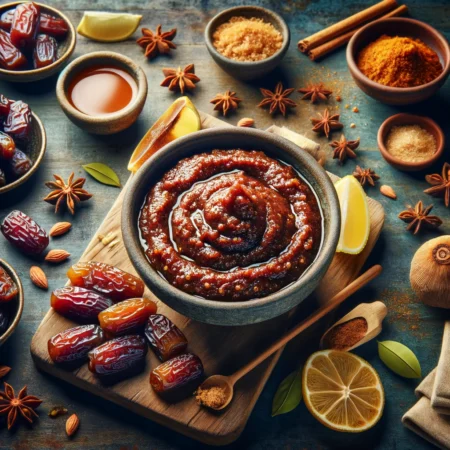I find myself wandering the streets of Istanbul, or as ancient tongues might declare, Byzantium, then Constantinople. This city, which has been coveted, conquered, and renamed, still stands as a majestic testament to the epochs it has witnessed. Lying between two continents, it’s a melting pot of cultures, stories, and flavors.
Amid the bustling bazaars and the ancient minarets, there’s a scent that draws me in – intoxicating, elusive, and with a history as layered as the city itself: Mahlab.
As legend goes, during the reign of the Byzantine Empire, there was a humble baker named Lysandros. A simple man with an extraordinary palate, he had an insatiable quest for flavors. His tiny bakery, tucked in a corner of the Hippodrome, was known for its innovative pastries. Yet, Lysandros was constantly in search of that one ingredient which could elevate his creations to the divine.
One fateful evening, an Arab trader named Sami, weary from his journey along the Silk Road, entered Lysandros’ bakery. Along with tales of distant lands, he brought with him the kernels of the St. Lucie cherry, a wild cherry native to the Mediterranean region. In the Arab world, these kernels were ground into a spice with a delicate aroma reminiscent of almonds and cherries, known to them as ‘Mahlab’.
Seeing the gleam in Lysandros’ eyes, Sami shared the Mahlab with him. The humble baker was enthralled. He experimented tirelessly, grinding the kernels and blending them with other spices. The resultant Mahlab Spice Mix became Lysandros’ magnum opus. The pastries he made with it were tender, fragrant, and like nothing Constantinople had ever tasted before.
News of his Mahlab-infused creations quickly spread throughout the empire. Nobles from far and wide visited his little bakery. Lysandros’ pastries were not only a sensory delight but became symbolic of the city’s confluence of cultures.
But as history has shown, Constantinople was always in flux. The empire saw numerous invasions, and amid political tumult, many art forms, including unique culinary recipes, were lost or forced into shadows. Lysandros’ bakery was one such casualty. But while his establishment vanished, the legend of his Mahlab pastries endured, passed down through hushed tones and secret family recipes.
Fast forward to modern-day Istanbul. As I traverse the labyrinthine alleys of the Grand Bazaar, I stumble upon a quaint spice shop run by a sprightly old woman named Aylin. Amongst the colorful mounds of spices, there it is – Mahlab Spice Mix. It’s a blend that has stood the test of time, combining the aromatic Mahlab with hints of cinnamon, nutmeg, and a touch of vanilla.
Aylin, seeing my interest, beckons me over. Over glasses of Çay (Turkish tea), she shares her family’s secret: she is a descendant of Lysandros. The Mahlab Spice Mix I see before me is crafted using the same recipe that once captivated an empire. It’s a blend that has been safeguarded through generations, a symbol of resilience and continuity.
Aylin graciously shares some of her Mahlab Spice Mix, and I use it to flavor a traditional Künefe. The results? Absolutely ethereal. Each bite is a dance of flavors, with the Mahlab lending a unique warmth and depth. It’s a taste of history, of passion, and of an undying spirit.
As I leave the shores of the Bosphorus, I carry with me more than just a spice mix. I carry tales of ancient empires and humble bakers, of conquests and culture, of loss and legacy.
The Mahlab Spice Mix is not just an ingredient; it’s an heirloom. It’s a blend that echoes the soul of Istanbul, a city that, like the Mahlab, seamlessly weaves the old with the new. It’s a reminder that even in the ever-changing sands of time, some flavors, and some stories, remain eternal.
Mahlab Spice Mix
Ingredients
- 2 tablespoons ground mahlab kernels
- 1 tablespoon ground cinnamon
- 1 tablespoon ground nutmeg
- 1 teaspoon vanilla powder
Directions
- Ensure your mahlab kernels are finely ground. If you have whole kernels, use a spice grinder or mortar and pestle to grind them to a fine powder.
- In a mixing bowl, combine the ground mahlab, cinnamon, nutmeg, and vanilla powder.
- Mix the ingredients thoroughly until well combined.
- Store your Mahlab Spice Mix in an airtight container, preferably in a cool, dark place to retain its aromatic potency.
- Use as desired in pastries, cakes, and other dishes to imbue them with the unique warmth and depth of this ancient blend.
Tips & Tricks: While this mix has been crafted to echo the ancient flavors of Constantinople, feel free to adjust the ratios according to personal preference. Mahlab has a strong, distinct flavor, so a little can go a long way. Also, always opt for good quality, fresh spices to get the best flavor out of your mix. This blend can also be a unique gift for those who appreciate the intricate tales and flavors of history.





